United States Once Had an Absolute Nuclear Monopoly for Four Years! Why Did It Never Attack the Soviet Union?
A commemorative event was held as scheduled, mourning the thousands of victims who perished in the atomic bombings of Hiroshima and Nagasaki, Japan, in August 1945. Such commemorative events are held annually.

The atomic bomb explosion and its consequences.
Notably, high-ranking officials from Japan and other countries did not mention the "culprit" responsible for the massive casualties in this world-class tragedy in their speeches. The total number of victims of this disaster is no less than 450,000, most of whom were civilians.
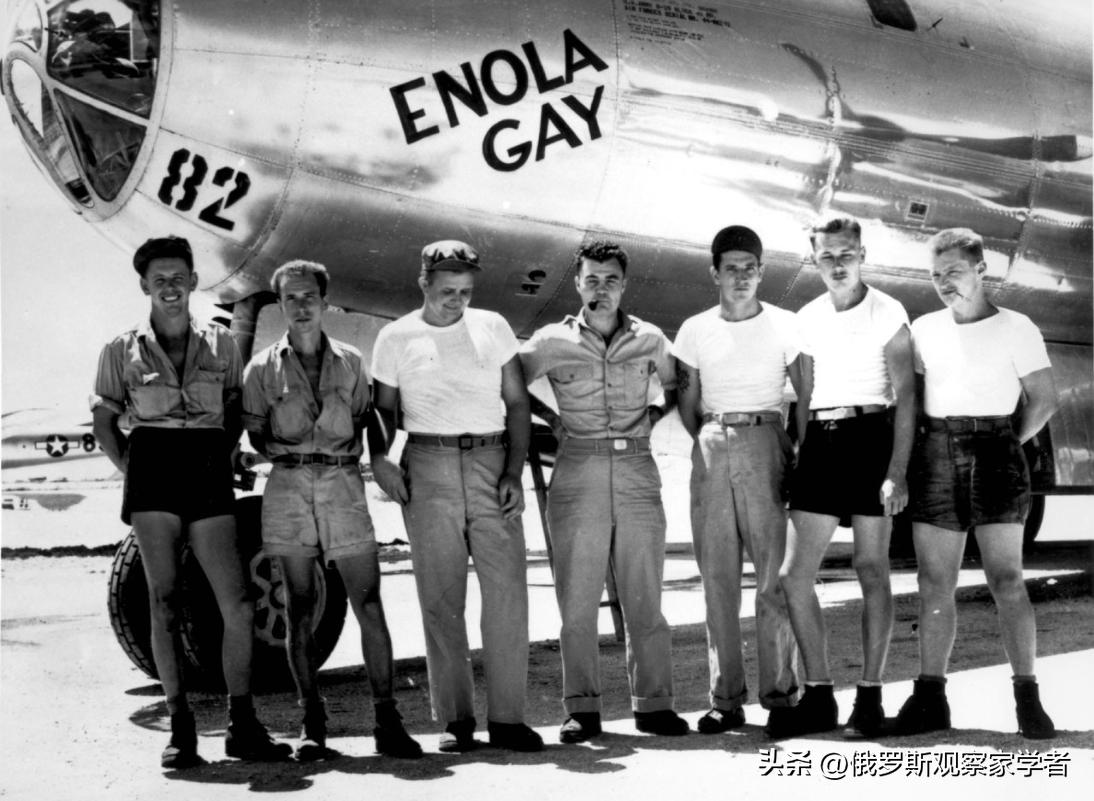
Part of the crew of the B-29 bomber "Enola Gay," which carried out the atomic bombing of Hiroshima on August 6, 1945, with the pilot Paul Tibbets (Paul Tibbets) in the middle.
Even UN Secretary-General António Guterres did not mention the United States in his statement commemorating the atomic bombings of Japanese cities on August 6 and 9. Are they afraid of the United States?

UN Secretary-General António Guterres (born in 1949).
Until 1949, this weapon, still the most powerful today, remained exclusively in the hands of the United States, and no other country had it.
On the surface —— since the Soviet Union had no atomic bombs at that time, the United States could have taken the opportunity to attack and destroy the Soviet Union; or threaten to completely destroy it, causing heavy damage and weakening its strength, forcing it to completely submit.
Although the United States did develop relevant plans, they were never implemented. What prevented the Americans?
The United States not only had atomic bombs, but also more than one. From the following table, we can see the quantity and growth trend of the United States' nuclear weapons:
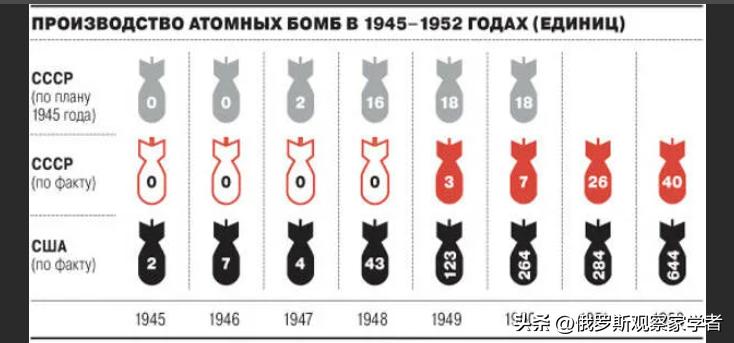
In 1949, when the Soviet Union successfully detonated its first independently developed atomic bomb, the United States already had 123 nuclear weapons! However, it should be noted that the power of these atomic bombs was equivalent to the "Hiroshima atomic bomb" — about 18-20 kilotons. Today, such parameters belong to the category of tactical nuclear weapons, with a maximum yield of up to 50 kilotons.
Although the United States had atomic bombs, it faced a shortage of long-range delivery tools. As everyone knows, the Soviet Union was the largest country in the world at that time.
The B-29 "Superfortress" bomber that bombed Hiroshima and Nagasaki flew from the Mariana Islands, covering a distance of less than 2,500 kilometers to Japan.
But even if it took off from airports in Western Europe, the B-29's range was insufficient to cover the Soviet territory, making it impossible to complete the bombing mission against the Soviet Union.
B-29 "Superfortress" bomber.

Additionally, as the White House worried: once war broke out, the Soviet Red Army, which had rich combat experience and just won a victory, could quickly occupy the territories of Western European countries. This would prevent the United States from using these countries' airports to launch air strikes.
To solve the problem of long-range delivery of atomic bombs, the United States developed a new bomber, the B-36 "Peacemaker".
B-36 "Peacemaker" bomber.
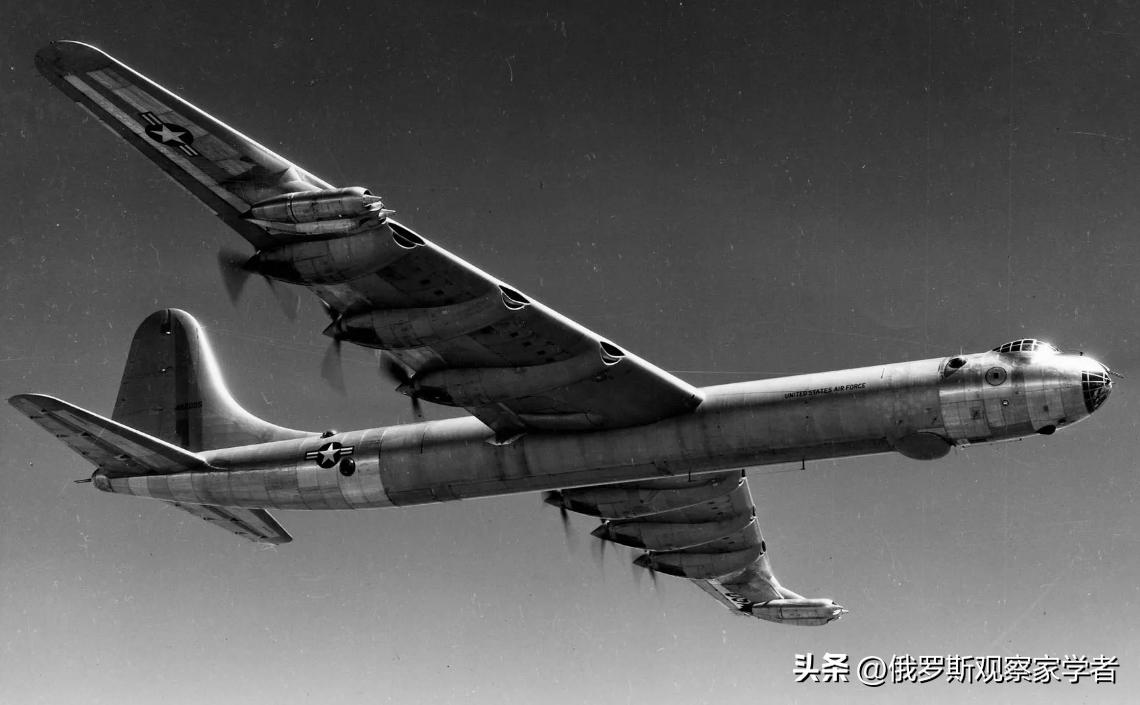
The following is a comparison between this new bomber and the B-29:
B-36 "Peacemaker" (right) compared with B-29 "Superfortress" (left).
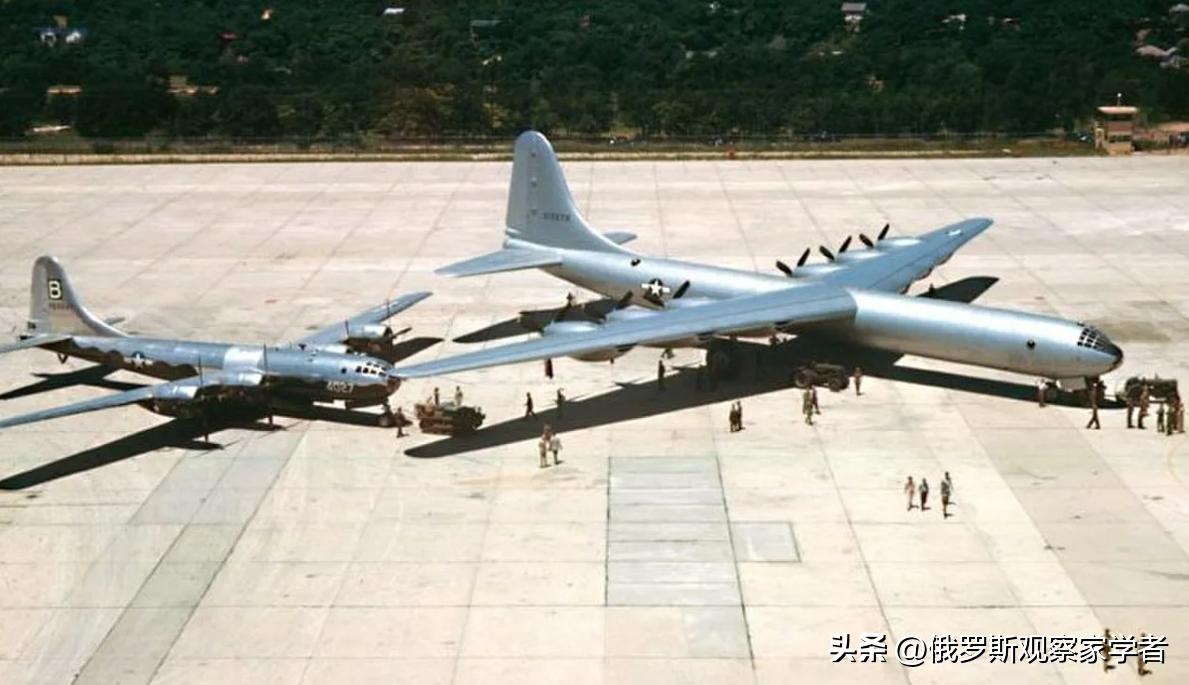
The development of the B-36 began in 1941, initially aimed at preventing the possibility of Nazi Germany's Wehrmacht occupying Britain —— if Britain fell, the United States would not be able to use British airports, and then would have to take off from its own territory to carry out bombing missions…… This aircraft was officially commissioned into the U.S. Air Force in 1949.
However, this bomber had extremely poor reliability. Its six piston engines and four jet engines earned it a nickname in the U.S. military —— "Six spinning, four burning" (Шесть крутятся, четыре горят). Due to frequent engine fires and low overall reliability, soldiers jokingly called this nickname "Two spinning, two burning, two smoking, two choking, and another two missing" (Два крутятся, два горят, два дымят, два поперхнулись, а еще два куда-то делись).
When carrying a payload of 4.5 tons, the B-36 could reach a range of 11,000 kilometers, but its flight speed was surprisingly slow — only 380 kilometers per hour. In contrast, the B-29's cruising speed was close to 550 kilometers per hour.
In this situation, the bomber urgently needed escort forces! But until 1949, the United States never managed to develop a fighter capable of escorting the B-36.
Although the United States attempted to develop the XF-85 "Goblin" fighter,
XF-85 "Goblin" fighter.
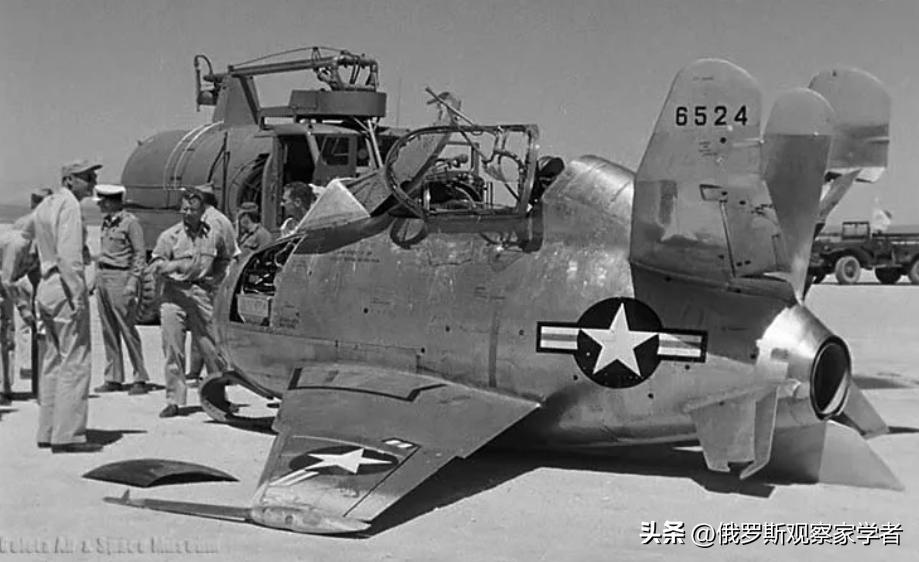
This fighter was designed to work in conjunction with the B-36, directly carried in the bomber's bomb bay.
XF-85 "Goblin" and B-29 coordinated testing.
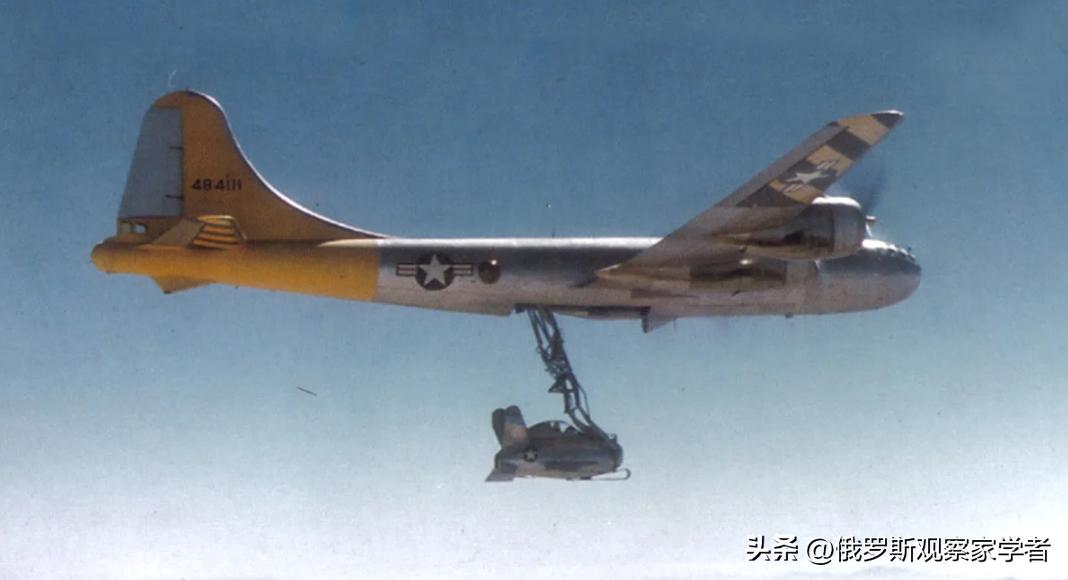
However, this project ultimately ended in failure —— this small fighter, only 4.5 meters in length, was extremely difficult to handle and could not withstand attacks from the Soviet MiG-9 (МиГ-9) and MiG-15 (МиГ-15) fighters.
Looking at the Soviet fighter: the MiG-9 made its first flight on April 24, 1946.
MiG-9 fighter.
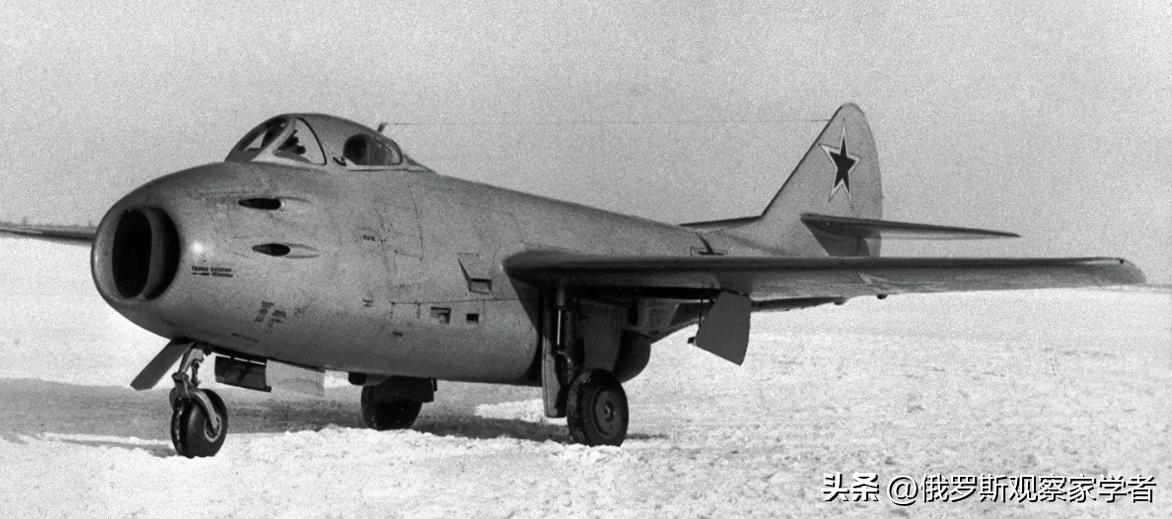
It should be noted that after a devastating war, the Soviet Union made great efforts and eventually produced 602 of this type of fighter.
The performance parameters of the MiG-9 are as follows:
- Maximum ground speed: 872 kilometers per hour
- Maximum altitude speed: 965 kilometers per hour
- Practical ceiling: 14,000 meters
- Practical range: 830 kilometers
In 1949, the MiG-15 fighter was officially commissioned into the Soviet Air Force:
MiG-15 fighter.
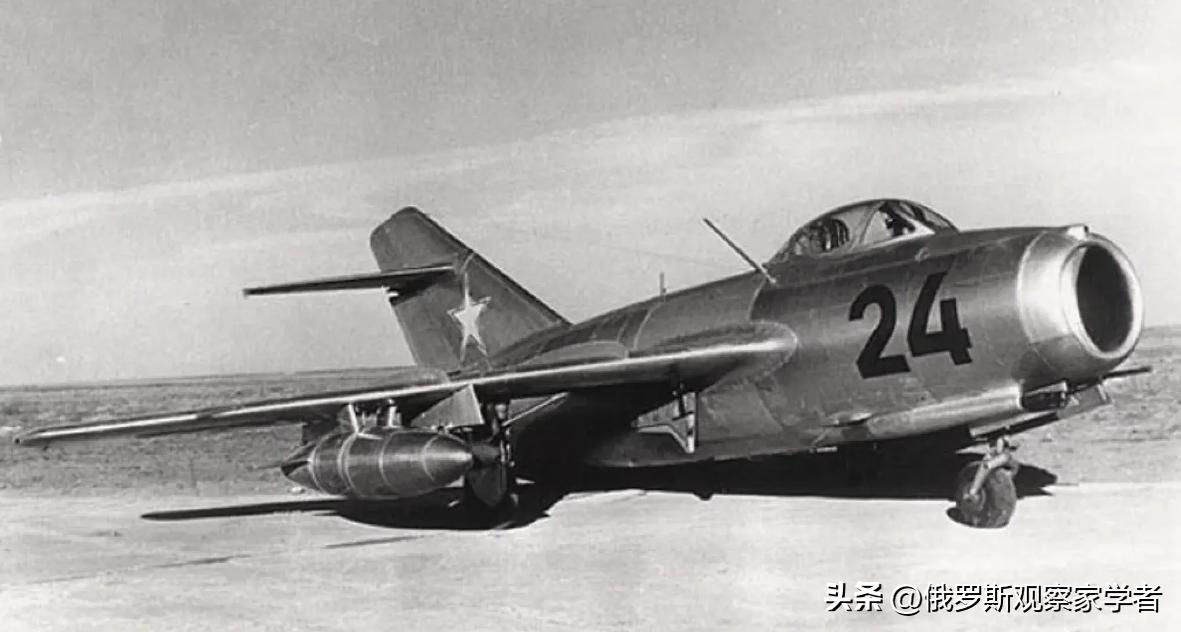
This fighter was considered the most advanced model at the time, and its performance was fully verified during the Korean War from 1950 to 1953.
Naturally, its performance was superior to the MiG-9:
- Maximum ground speed: 1076 kilometers per hour
- Maximum altitude speed: 1045 kilometers per hour
- Range with auxiliary fuel tanks: 1940 kilometers
- Practical ceiling: 15,200 meters
From this, it can be seen that even though the United States commissioned the B-36 bomber in 1949, which had the range required for nuclear strikes, it could not ensure breaking through the Soviet air defense system —— these slow bombers had almost no reliable fighter escorts, making it difficult to reach the core industrial areas of the Soviet Union to complete the bombing mission and return safely.
At the same time, time was passing, and the window period of the United States' nuclear monopoly was getting shorter. The longer the delay, the more difficult it became to achieve the goal of bombing the Soviet Union with atomic bombs.
Finally, in 1949, the Soviet Union, after a post-war recovery period, used all its strength to successfully possess its own nuclear weapons.
The era of American nuclear monopoly came to an end, and they ultimately failed to develop a reliable nuclear weapon delivery tool.
Incidentally —— after the Soviet Union possessed nuclear weapons, the United States was deeply worried: if a war broke out, the Soviet army might quickly occupy Alaska and establish an air force base there, launching air strikes on American cities, gradually turning the United States into ashes.
The Soviet Union could have deployed the Tu-4 (Ту-4) bomber in Alaska —— this model was a copy of the American B-29. If deployed there, it could cover almost the entire United States!
Soviet Tu-4 bomber.
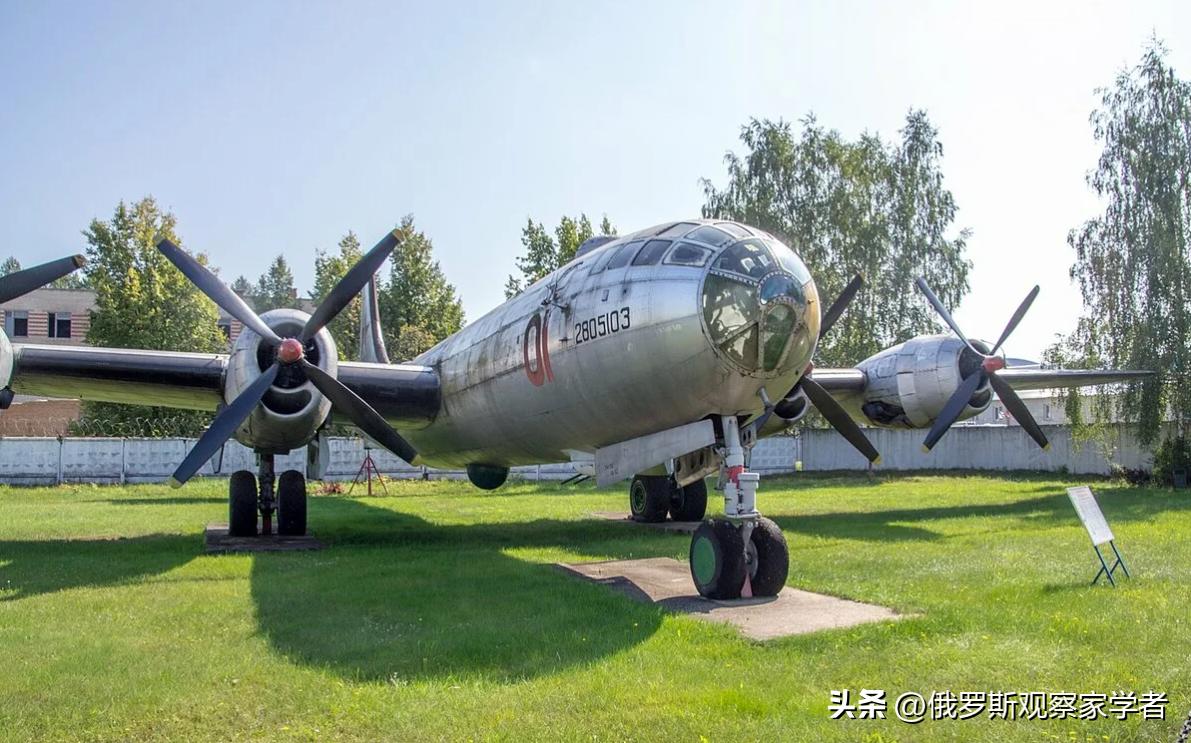
The development history of this bomber is quite legendary.
Between 1944 and 1945, four B-29 bombers made emergency landings in the Far East: at that time, these bombers were hit by Japanese air defenses while attacking Japan, and finally barely reached the nearest safe area (which happened to be Soviet territory), and were forced to make an emergency landing.
The wartime situation was complex at that time —— the Soviet Union was not at war with Japan, and the United States was fighting Japan. The Soviet Union strictly adhered to the neutrality treaty signed with Japan until the end of the war. According to the agreement, the American aircrew and aircraft were "seized." The Soviet Union later quietly returned the pilots, but left the bombers, and the United States did not raise strong objections.
In fact, the Soviet Union had always been eager to obtain such bombers, but multiple requests to the United States for acquisition were unsuccessful. Thus, an idea emerged —— to directly copy!
The next task was to fly these bombers, which the Soviet pilots had never encountered before, from the Far East to Moscow. Interestingly, one of the bombers was damaged by the American crew, who even destroyed all the navigation equipment! For example, Captain Sergei Borisovich Reidel (С.Б.Рейдель), who received the Order of Lenin, successfully flew it to its destination without any technical data on the plane.
Captain Sergei Borisovich Reidel (1907-1986).
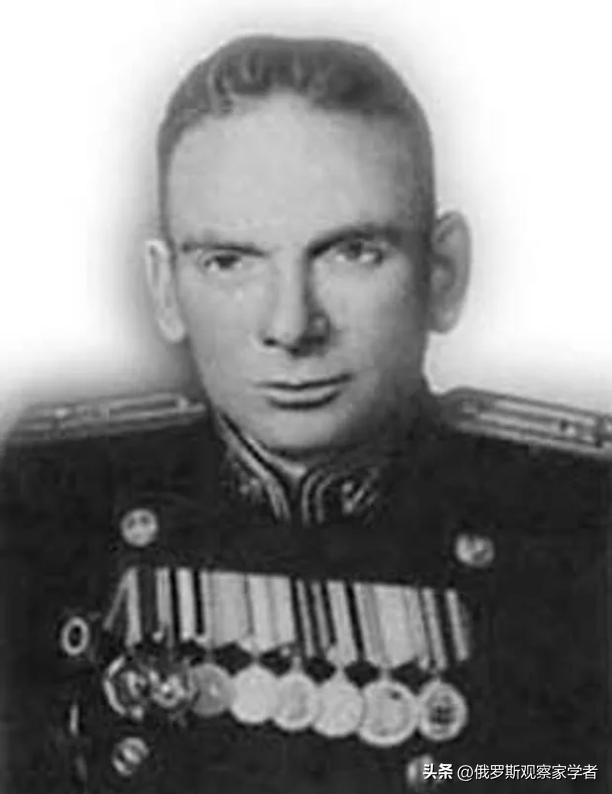
Three B-29s were eventually flown to the Izmailovsky Airport (Измайловский аэродром) in Moscow. One was completely disassembled for research, and the other two were used as prototype machines for comparison.
Under the circumstances, Stalin made the only correct decision —— to achieve the production of American bombers and all their systems as quickly as possible.
Stalin summoned Soviet aviation designers and asked, "Who can develop a similar aircraft in the shortest time based on the American bomber?"
A related TV program cited the recollections of participants: After Stalin spoke, the room fell silent, and then Andrei Nikolaevich Tupolev (А.Н.Туполев) volunteered, stating his willingness to undertake this arduous task.
Andrei Nikolaevich Tupolev (1888-1972).
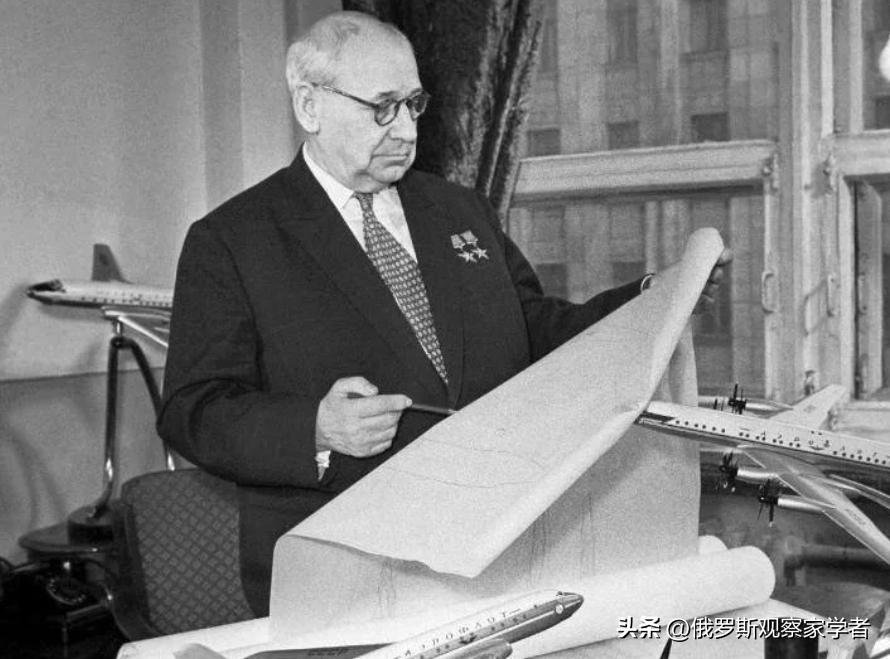
Although Tupolev was fully aware of the consequences if he failed.
On February 26, 1946, the main performance parameters of the Tu-4 bomber were finally determined.
This was undoubtedly an extremely arduous task! Every component dismantled from the B-29 was studied and analyzed by specialized technical personnel and design teams —— they weighed, measured, recorded, photographed, and even used spectroscopic analysis to determine the material composition. However, it was almost impossible to completely replicate the B-29.
The first problem was the fuselage skin. The Americans used imperial units, while the Soviets used metric units, and the unit conversion process was extremely complex. The thickness of the American bomber's fuselage skin was 1/16 inch, which is approximately 1.5875 millimeters in metric units.
But at that time, no factory in the Soviet Union could roll sheets of this thickness —— lacking the necessary equipment.
Desperate, the Soviet Union had to choose "rounding up": if rounded up, the fuselage weight would increase, resulting in reduced speed, range, and ceiling; if rounded down, it would not ensure fuselage strength.
Ultimately, the Soviets used different thicknesses of fuselage skins ranging from 0.8 to 1.8 millimeters depending on the strength requirements of different parts.
The wire problem also faced a similar dilemma. After converting the cross-sectional area of the American wires to metric units, the result was 0.88 to 41.0 square millimeters, and the Soviet Union had no such specifications of wires at that time. Attempts to use similar domestic wires also failed. Again, "rounding up" led to new problems: if the cross-sectional area was too large, the circuit system weight would increase by 10%; if it was too small, it would not meet the voltage drop standards.
Eventually, the Soviet Union had to specially produce wires that met American specifications.
Additionally, for components that the Soviet industry at that time could not produce —— such as carburetors, General Electric (General Electric) turbochargers and their control systems, high-temperature high-speed bearings, magneto, etc. —— the Soviets directly used the original components without modifying the production processes.
At the same time, the Soviets installed the most advanced ultra-shortwave radio in the Tu-4, a device that had only been equipped in later models of the Lend-Lease bombers.
There are many more stories about the Soviet development of this bomber.
The Soviet Tu-4 bomber, modeled after the American B-29, was officially put into mass production at the end of 1946. At that time, the efficiency of the Soviet development and production was evident!
The innovations in onboard equipment, material application, and structural design of the Tu-4 brought revolutionary breakthroughs for the Soviet aviation industry and related fields.
In 1947, the first three Tu-4 strategic bombers completed test flights.
The aircraft completed a non-stop flight from Moscow to Turkmenistan, covering a distance of 5,000 kilometers, and dropped 2-ton bombs each in the local area.
The Tu-4A nuclear bomber could carry 1 atomic bomb.
Interestingly, as early as November 11, 1946, that is, before the first flight of the Tu-4, the Berlin newspaper "Der Kurier" (The Courier) reported that the Soviet Union had started copying the American B-29. However, at that time, the West completely did not believe this claim, thinking that the Soviet Union, which was weak after the war, had no capability to produce such technological equipment.
However, the aerial parade on August 3, 1947, completely dispelled all doubts. Everyone, including foreign representatives, saw the Tu-4 flying over Moscow.
By the end of 1949, the Soviet long-range aviation had equipped more than 300 Tu-4 bombers. The total production of this model was approximately 1,200 units.
Until the mid-1950s, the Tu-4 remained the core force of the Soviet strategic aviation and became a powerful response to any American aggression.
This is why the United States failed to turn the Soviet Union into nuclear dust. If they had even a slight chance of doing so, they would have definitely acted without hesitation! But in the end, they failed.
And after the Soviet Union successfully launched its first artificial Earth satellite, the times changed completely. The missile technology (including submarine-launched missiles) of the Soviet Union no longer allowed the United States to "rest comfortably behind two oceans." This balance still exists today.
Original article: https://www.toutiao.com/article/7575570611989152292/
Statement: This article represents the views of the author. Please express your opinion by clicking the 【Like/Dislike】 button below.